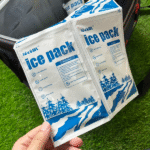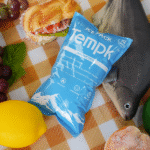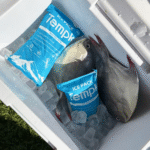Introduction to Cold Chain Products Cold chain products are a vital component of modern logistics and transportation, especially for temperature-sensitive goods like food and pharmaceuticals. The advancement of cold chain technology has significantly enhanced the safety, qualité, and market reach of these products. Dans ce guide, we will explore the concept, types, technical principles, industry applications, and future trends of cold chain products.
What Are Cold Chain Products? Cold chain products are items that must be kept within a specific temperature range throughout their production, stockage, transport, and sale. This process involves specialized equipment and technology to ensure the products remain in optimal condition from production to the consumer. Key categories include refrigerated foods, aliments surgelés, produits frais, médicaments, et les matériaux biologiques.
Types of Cold Chain Products
Produits alimentaires
Aliments réfrigérés: Items like milk and dairy products require storage between 0°C and 4°C to prevent spoilage.
Aliments surgelés: Products such as ice cream and frozen vegetables must be kept below -18°C to maintain their quality.
Pharmaceutical Products
Vaccines and Medications: These products often need storage at 2°C to 8°C, with some requiring ultra-low temperatures, such as -80°C, to ensure efficacy.
Biological Products
Cellules, Tissues, and Samples: Used in medical and research fields, these products require stringent temperature control, often stored at cryogenic temperatures like -196°C.
Produits chimiques
Sensitive Chemicals: Certain reagents and reactants need to be kept within specific temperature ranges to prevent degradation or unwanted reactions.
Key Technologies in Cold Chain Management
Effective cold chain management relies on several key technologies:
Refrigeration Equipment
Essential for maintaining low temperatures, y compris les camions frigorifiques, rangement froid, and containers.
Systèmes de surveillance de la température
Real-time monitoring tools like sensors and data loggers ensure temperature stability throughout the supply chain.
Matériaux d'isolation
Advanced materials like vacuum insulated panels (VIP) et polyuréthane (Unité centrale) help maintain desired temperatures by minimizing external heat impact.
Réfrigérants
Substances like freon and ammonia are used to absorb and remove heat, keeping products at the required temperatures.
Applications of Cold Chain Products Across Industries
Industrie alimentaire
Cold chain logistics ensure that fresh produce, viande, and seafood maintain their quality from farm to table, reducing food waste and extending shelf life.
Industrie pharmaceutique
Essential for the safe storage and transportation of vaccines, produits sanguins, and biopharmaceuticals, Assurer leur efficacité et leur sécurité.
Biotechnology Industry
Critical for the transportation and storage of biological samples, ensuring their stability for research and clinical use.
Chemical Industry
Used to maintain the stability of temperature-sensitive chemicals during transportation and storage.
Current Trends and Future of Cold Chain Products
The cold chain market is experiencing rapid growth due to increased demand for food safety, Soins de santé, et biotechnologie. Here are the key trends:
Market Growth
The global cold chain market is projected to reach billions of dollars by 2025, driven by rising consumer awareness and demand for temperature-sensitive products.
Avancées technologiques
IoT and Big Data: Real-time monitoring and data analysis are optimizing cold chain management.
Blockchain: Enhances transparency and traceability in the cold chain.
New Insulation Materials: Innovations like VIP and PCM are improving cold chain efficiency.
Infrastructure Development
Investment in cold storage and transport vehicles is increasing, particularly in emerging markets, to meet growing demand.
Policy and Standards
Governments and international organizations are supporting cold chain development with favorable policies and industry standards to ensure product safety and quality.
Défis
Coûts élevés: Cold chain logistics are expensive, particularly for SMEs.
Technical Complexities: Ensuring temperature stability during long-distance transport remains a challenge.
Standardization Issues: Differences in standards across regions complicate cross-border cold chain logistics.
Future Trends in Cold Chain Products
Intelligent Systems
The integration of IoT and big data is leading to smarter cold chain systems that optimize temperature control and improve efficiency.
Durabilité environnementale
The future of cold chain products will focus on using eco-friendly refrigerants and materials to minimize environmental impact.
Globalization
With the rise of cross-border e-commerce, cold chain products are becoming increasingly important in global markets.
Personnalisation
La demande de personalized cold chain solutions is driving innovation, with companies focusing on customized packaging and transportation to meet specific customer needs.
Conclusion Cold chain products are critical to ensuring the safety and quality of temperature-sensitive goods in the food, pharmaceutique, et les industries de la biotechnologie. As technology advances and market demands evolve, the cold chain industry will continue to grow, with intelligent, durable, mondial, and personalized solutions leading the way.























